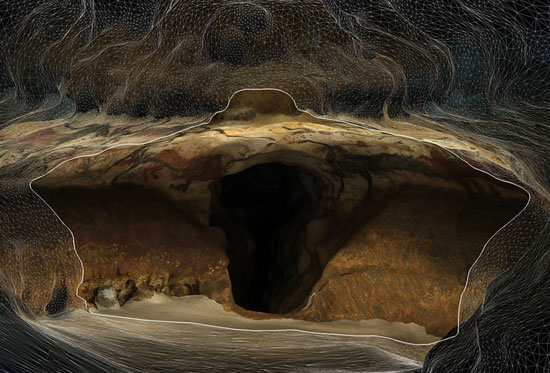See Lucy Lippard, Six Years: The Dematerialization of the Art Object from 1966 to 1972 (New York: Praeger, 1973).
See Joshua Simon’s Neomaterialism book or Maria Lind’s “Abstract Possible” exhibition. Also see Dieter Roelstraete’s excellent essay on lightness and heft in artworks →.
Consider Timothy Mitchell’s comparison between the logistical demands of oil and coal. As oil can be transported by water, it is more difficult to interrupt its flows between nodes than in the case of coal, which due to its weight must be transported by fixed rail line. See Timothy Mitchell, Carbon Democracy (London: Verso, 2011), 36–39.
Glatt interned with the production crew of the film The Black Swan, directed by Darren Aronofsky, about a schizophrenic ballerina →.
See →.
See →.
See the extensive work of Eyal Weizman and Forensic Architecture.
Reza Negarestani, Cyclonopedia (Victoria: re.press, 2008), 182.
Guy Debord, The Society of the Spectacle, trans. Fredy Perlman and John Supak (Detroit: Black & Red, 1977), 160. “The spectator’s consciousness, immobilized in the falsified center of the movement of its world, no longer experiences its life as a passage toward self-realization and toward death. One who has renounced using his life can no longer admit his death. Life insurance advertisements suggest merely that he is guilty of dying without ensuring the regularity of the system after this economic loss; and the advertisement of the American way of death insists on his capacity to maintain in this encounter the greatest possible number of appearances of life. On all other fronts of the advertising onslaught, it is strictly forbidden to grow old. Even a ‘youth-capital,’ contrived for each and all and put to the most mediocre uses, could never acquire the durable and cumulative reality of financial capital. This social absence of death is identical to the social absence of life.”
Debord, “Separation Perfected,” no. 5 in The Society of the Spectacle.
“Speculation,” New Oxford American Dictionary on my laptop.
David Graeber, Debt: The First 5,000 Years (Brooklyn: Melville House, 2011), 341.
See Hito Steyerl’s “In Free Fall: A Thought Experiment on Vertical Perspective,” at →.
There is already an accepted geopolitical and economic lineage in place to explain how we got to where we are, and it is not necessary to go too deeply into the continuum that stretches from Ayn Rand to Milton Friedman and the Chicago School to fiat currency and Bretton Woods to the 1973 oil crisis to Thatcher and Reagan and Deng Xiaoping to perestroika and 1989. It is also a bit misleading for having been assembled as a right-wing conspiracy convenient for sealing off all hope for a melancholic and impotent left that prefers all the heroic dramaturgy of fist-pumping denouncement to the darker arts of actual liberalism.
Thanks to Annika Eriksson for pointing this out to me. As quoted by Gertrud Sandqvist here → Original source: Uno Ahrén, Gunnar Asplund, Wolter Gahn, Sven Markelius, Gregor Paulsson, and Eskil Sundahl, acceptera (accept) Manifesto on Modern Architecture, Stockholm, 1931; reprinted 1980.
John Maynard Keynes, The Collected Writings of John Maynard Keynes, Vol. 28, ed. D. Moggridge (London: Macmillan Press, 1982), 368. In the same volume Keynes also wrote, “If with state aid the material frame can be constructed, the public and the artists will do the rest between them. The muses will emerge from their dusty haunts, and supply and demand shall be their servants.” Quoted in → and →.
As Fred Moten and Stefano Harney describe the relation of today’s student to the university: “The Only Possibly Relationship to the University Today Is a Criminal One,” in The Undercommons: Fugitive Planning and Black Study (Brooklyn: Minor Composition, 2013), 26–30.
See Michel Foucault, The Birth of Biopolitics: Lectures at the Collège de France, 1978–1979 (New York: Palgrave Macmillan, 2008), 215–233, 239–261.
See →.
In a conversation between François Ewald and Gary Becker at the University of Chicago →.
Thanks to Maria Lind for originally reminding me of solar energy.
Michel Serres, The Parasite (Baltimore: The Johns Hopkins University Press, 1982), 173. “The dam holds the water that comes from glaciers and from snow, from wind, clouds, heat, and cold. Coke, gas, or water power is stored heat in any case. A while back, the collection of capitals was converging on the rock made of signatures; these resources also head together toward one spot: the sun whence they come and to which they go. These reservoirs are only subsuns. Their source, far upstream, is the sun. The real, ultimate capital is the sun. Subcapitals are time functions, but our time is that of the sun. Our cosmological, astronomic, energetic, entropic, informational times, all cyclic and reversible, as well as the irreversible times of disorder and death, of life and order randomly invented—all of these intertwine in the sun. In matter of energy and of matter, only the sun creates and transforms. All kinds of materialism, and especially those that seek to account for real movement and its excess, join together with various energetics and perhaps idealisms here—they are, when all is said and done, all subcults of the sun.”
Also see Matteo Pasquinelli’s “The Contradiction of the Sun (and the Limits of a Molecular Revolt),” →.
Reza Negarestani, “Solar Inferno and the Earthbound Abyss” →.
Donna Haraway, “A Cyborg Manifesto: Science, Technology, and Socialist-Feminism in the Late Twentieth Century,” in Simians, Cyborgs and Women: The Reinvention of Nature (New York: Routledge, 1991), 153 →.
Earlier versions of this essay appeared in IINN PPEERRPPEETTUUAALL PPRROODDUUCCTTIIOONN, a newspaper published as part of SOLO SHOW, an exhibition by Robbie Williams at e-flux in 2013. Many thanks to Natascha Sadr Haghighian, Hito Steyerl, Tom Holert, Maria Lind, Mariana Silva, Kaye Cain-Nielsen, and Amal Issa for their crucial input.
